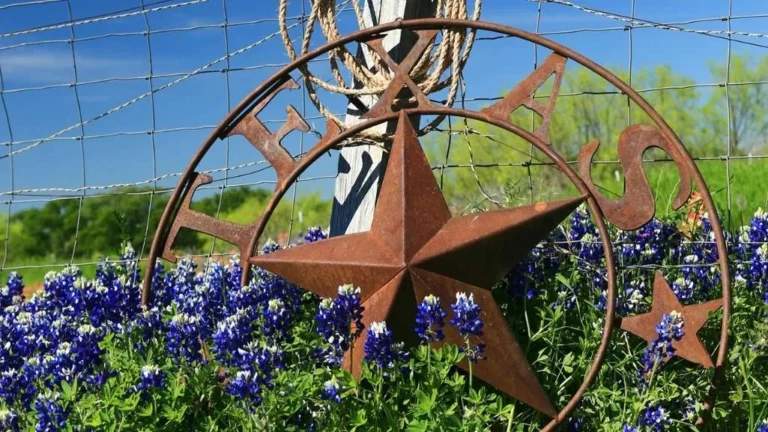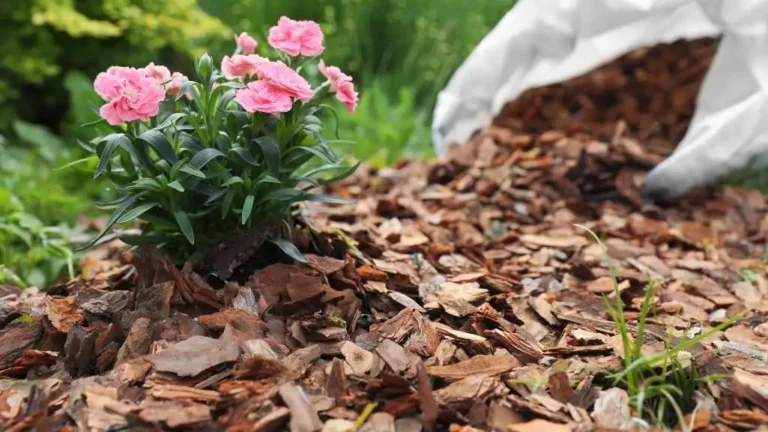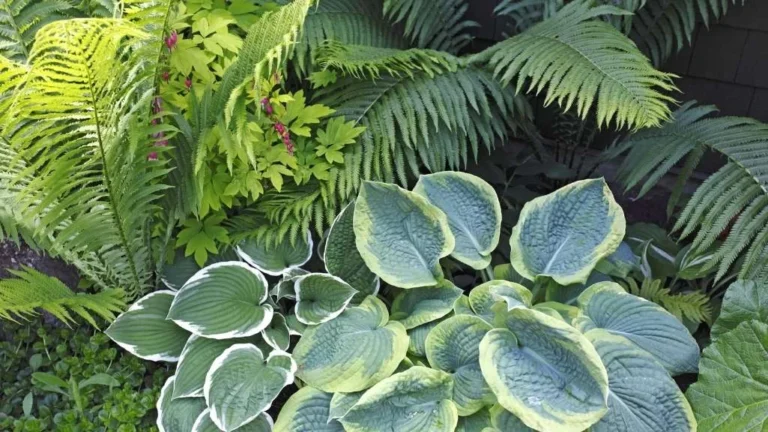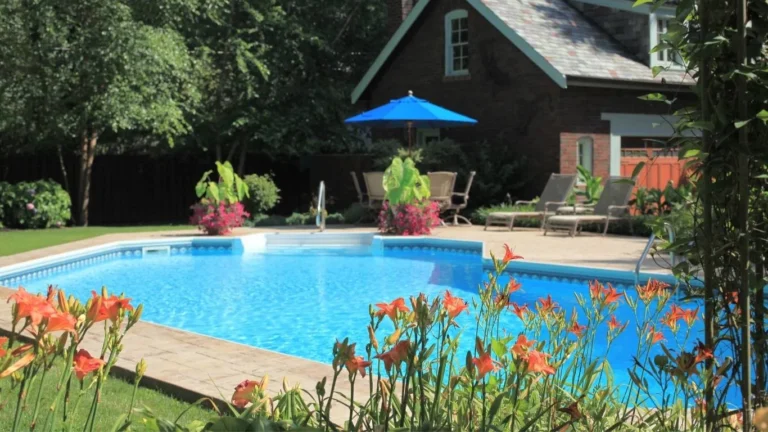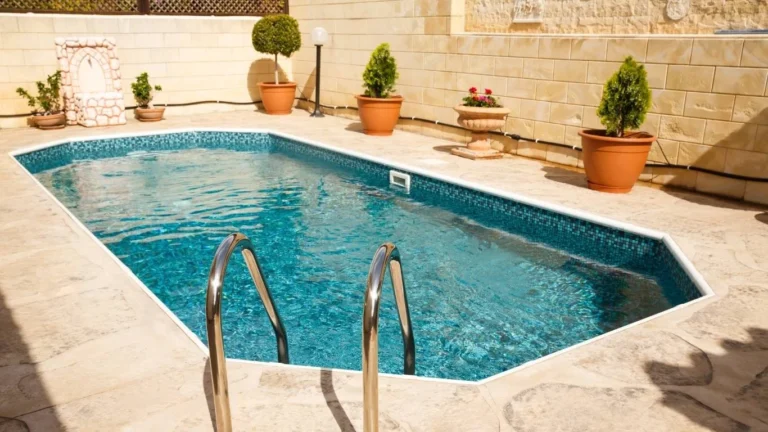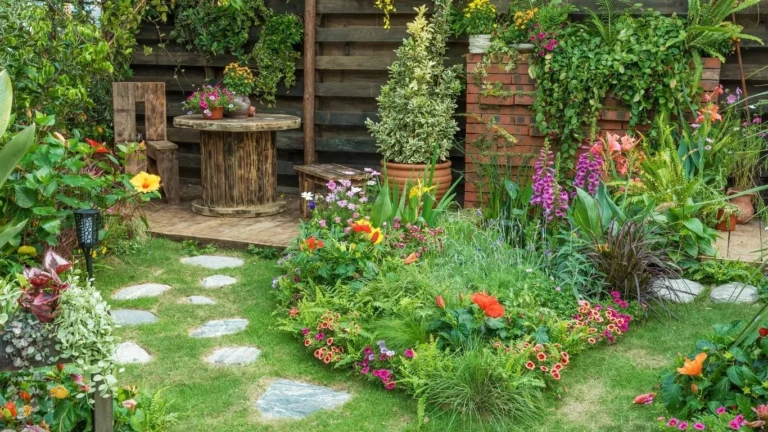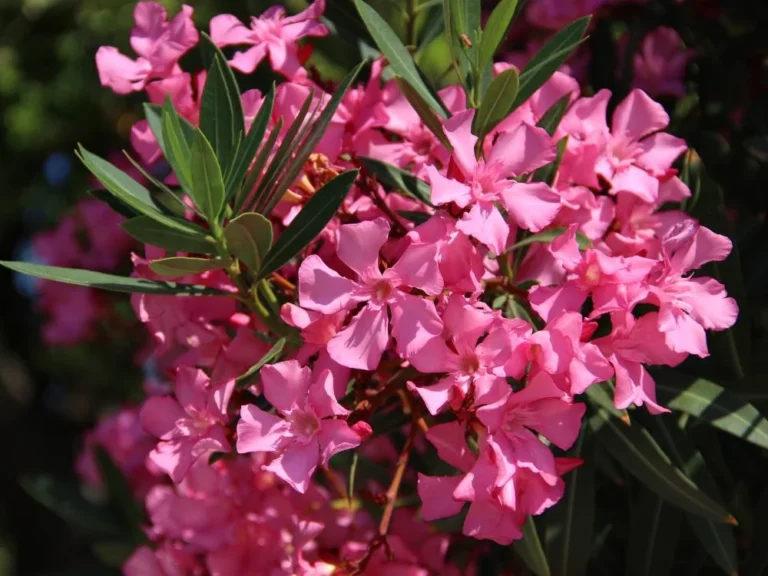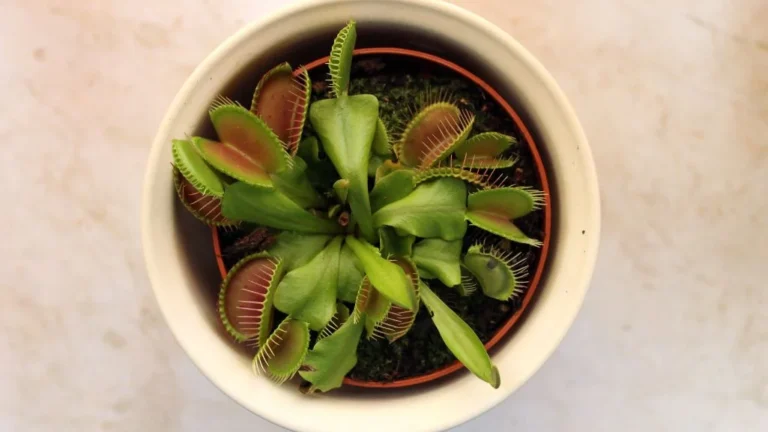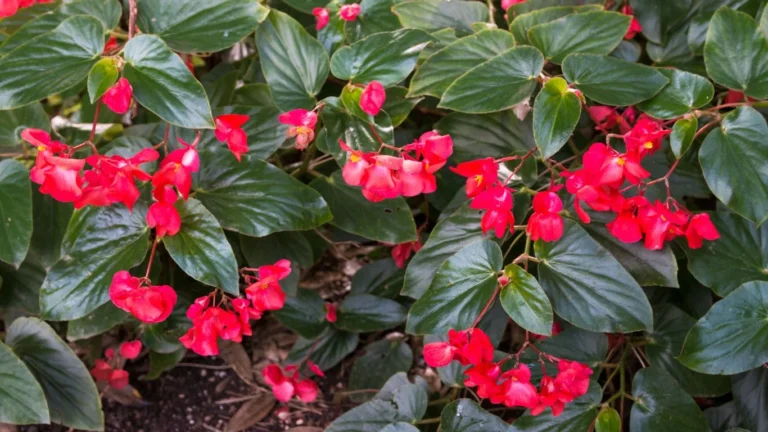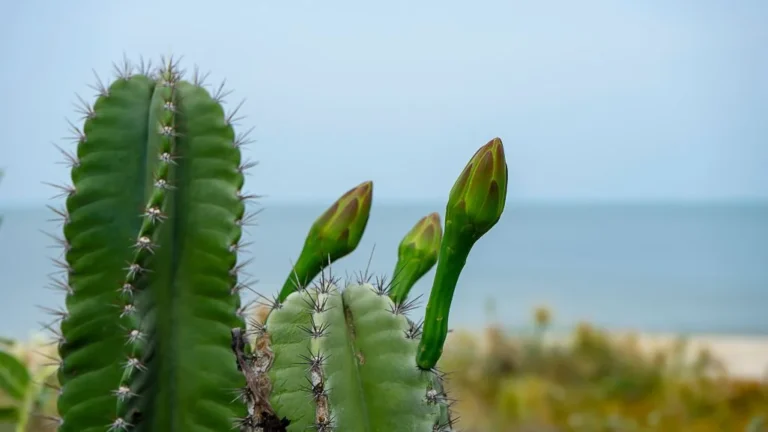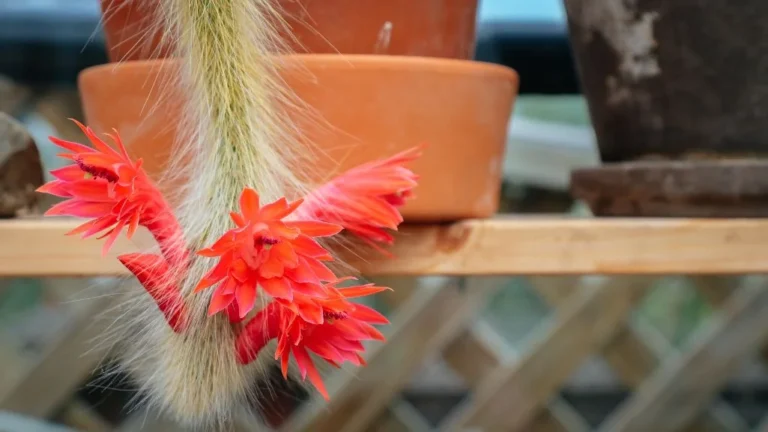Before I met Tillandsia Albertiana, I already had a bit of experience with air plants. I always loved how low-maintenance and quirky they were—no soil, no mess, and still so full of life. But one day, while browsing through a local nursery, something caught my eye.
It was a small air plant with soft, green leaves and a hint of red in the middle. The tag read Tillandsia Albertiana. I hadn’t seen this one before. The shopkeeper mentioned it blooms in red and grows easily even with minimal care. That was enough to convince me to take it home.
Since then, this little plant has become one of my favorites. What I love most about Tillandsia Albertiana is how it brings beauty without demanding much in return. It doesn’t need soil, fancy pots, or constant attention. I can place it almost anywhere with good light, and it just does its thing—growing, blooming, and quietly adding charm to my space.
Its soft leaves feel almost velvety, and when it blooms with that bright red flower, it honestly feels like a little celebration. Plus, it reminds me to stay grounded and flexible—just like it thrives in air, I can learn to grow even when things feel uncertain.
Whether it’s sitting on my shelf or tucked into a piece of driftwood, this plant makes everything feel more peaceful and alive. It’s simple, yet special—and that’s exactly why I keep coming back to it.
It’s not just easy to care for—it also has a quiet charm that adds life to any space. In this post, I’ll walk you through how I care for my Tillandsia Albertiana and what I’ve learned along the way.
☀️ Light Requirements for Tillandsia Albertiana
One of the first things I learned after bringing my Tillandsia Albertiana home was just how much it loves light—but not just any light. Bright, indirect light is the sweet spot for this airy little plant. If you’ve got a sunny windowsill with filtered light or a well-lit room that stays bright most of the day, you’re off to a great start!
Too much direct sunlight, especially in the afternoon, can actually scorch its soft, silvery leaves. I made that mistake once by placing mine right under harsh midday rays—and the tips started to crisp. Lesson learned! Now, I keep it near an east-facing window where it gets gentle morning light without the burn.
If you live in a low-light home like I used to, don’t worry—Tillandsia Albertiana can adapt, but it may grow a little slower or bloom less often. In that case, I recommend rotating it closer to brighter areas during the day or using a grow light for a few hours.
Best Light Conditions Recap
✅ Bright, indirect sunlight is ideal
🌤️ East or north-facing windows work great
❌ Avoid direct, harsh afternoon sun
💡 Supplement with grow lights in low-light rooms
💧 Watering Routine for Tillandsia Albertiana
When I first brought home my Tillandsia Albertiana, I’ll admit—I was a little confused about how to water a plant that doesn’t grow in soil. Do I mist it? Soak it? Let it figure things out on its own?
Thankfully, this air plant taught me quickly. It may be low-maintenance, but it still loves a good drink.
💦 Soaking vs. Misting – What Works Best?
I personally give my Tillandsia Albertiana a good soak once a week. I fill a bowl with room-temperature, filtered water and let it soak for about 20–30 minutes.
After that, I gently shake off the extra water and lay it upside down on a towel to dry completely; this part is super important to prevent rot.
On warmer days or if my home feels a bit dry, I give it a light mist midweek just to keep it hydrated.
🚿 Best Water to Use
Tillandsias are sensitive to chemicals like chlorine and fluoride. I always use:
- Rainwater (when I can collect it)
- Or filtered/distilled water
Tap water is okay occasionally, but I try not to make it a habit, especially if it’s hard water.
💨 Drying is the key
After every watering, I let my Albertiana dry fully within 3–4 hours. Air plants don’t like staying wet. I usually place mine somewhere with good airflow—a fan nearby or a breezy window works wonders.
Quick Watering Tips
✅ Soak once a week for 20–30 mins
💦 Mist in between if air feels dry
🚫 Avoid soaking in the evening (it needs time to dry)
✅ Use filtered or rainwater when possible
🔄 Shake off water and dry upside down
💨 Air Circulation for Tillandsia Albertiana
If there’s one thing I’ve learned from caring for air plants, especially my Tillandsia Albertiana; it’s that fresh air matters a lot. These little plants don’t just enjoy good airflow, they depend on it.
Unlike traditional houseplants, Tillandsia Albertiana doesn’t live in soil, so it takes in nutrients and moisture directly through its leaves. That means proper air circulation helps it breathe, dry off after watering, and stay healthy.
❓ Why Airflow Is So Important
When I first started with air plants, I made the mistake of placing one inside a pretty closed terrarium. It looked cute, but it stayed damp for too long, and sadly, that plant didn’t make it. That’s when I realized, Tillandsias are not fans of tight, enclosed spaces.
Your Tillandsia Albertiana needs space to breathe. After watering, if it can’t dry out within a few hours, there’s a big risk of rot.
So, I always make sure it’s in a well-ventilated spot and never in a container with a lid.
🏡 Best Places for Air Circulation
- Near a window with natural airflow
- On open shelves or hanging displays
- Close to a ceiling or oscillating fan (not directly blowing, just nearby)
- Outdoors in the shade (if weather allows)
Quick Air Circulation Tips
❌ Avoid enclosed glass terrariums
✅ Let the plant dry completely after watering
🌀 Place in an airy, open spot (especially after soaking)
🚫 No stagnant corners or stuffy shelves
🌿 Rotate your plant occasionally to keep all sides fresh
Since I started paying attention to airflow, my Tillandsia Albertiana has looked happier, perkier, and blooms more reliably. Good air is like fresh energy for this plant.
🌡️ Temperature & Humidity for Tillandsia Albertiana
One of the reasons I love Tillandsia Albertiana so much is how adaptable it is, especially when it comes to temperature and humidity. But just like any living thing, it does have its sweet spots where it thrives best.
🌡️ The Ideal Temperature Range
Tillandsia Albertiana prefers a comfortable range between 15°C to 27°C (60°F to 80°F). Sounds familiar? Yep—basically the same temperature we enjoy indoors! So if you’re comfortable in your home, chances are, your air plant is too.
I keep mine indoors year-round, but if you’re placing it outdoors during summer, make sure it’s protected from intense sun and sudden cold drafts. And remember—never leave it out during frost. This plant isn’t a fan of the cold!
💧 What About Humidity?
Since Tillandsia Albertiana is native to the highlands, it loves moderate to high humidity. In my experience, it does especially well in kitchens and bathrooms where the air stays a little more moist.
But don’t worry if your home is on the drier side (like mine during winter!). You can still keep your plant happy with:
- Regular misting
- Weekly soaking
- A nearby humidity tray or small room humidifier
Temperature & Humidity Care Tips
✅ Keep temps between 15°C to 27°C (60°F to 80°F)
❌ Avoid freezing temperatures
💧 Loves humidity—aim for 50% or higher if possible
🌫 Mist more often in dry climates or seasons
🔥 Avoid placing near heaters, radiators, or AC vents
With just a little attention to warmth and humidity, your Tillandsia Albertiana will stay vibrant, strong, and full of life. I think of it like this: if I’d feel cozy in a spot, my air plant probably would too.
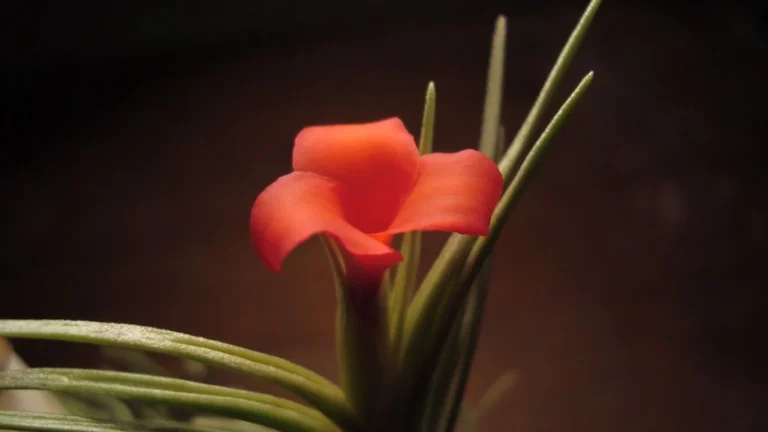
🌸 Blooming & Pups (Baby Plants) for Tillandsia Albertiana
If there’s one moment that truly stole my heart, it was seeing my Tillandsia Albertiana bloom for the first time! This little plant may be low-maintenance, but when it decides to bloom, it puts on a beautiful burst of red or magenta that feels like a reward for your care and attention.
🌼 The Blooming Process
Tillandsia Albertiana usually blooms once in its lifetime, producing a vibrant flower from the center. The bloom lasts a few days to a week, and while it doesn’t happen often, it’s completely worth the wait.
I noticed mine blooming during spring, after months of bright light, proper watering, and a little patience. It’s a sign that your plant is happy and healthy!
🌸 What Are Pups?
“Pups” are the baby air plants that grow around the base of the mother plant after blooming. It’s the plant’s way of continuing its legacy—how sweet is that?
Each plant typically produces 2 to 3 pups, and they grow slowly over time. I like to leave mine attached until they’re about 1/3 the size of the parent, then gently separate them if I want to display them individually.
✂️ How to Remove Pups
- Wait until the pup is at least ⅓ to ½ the size of the mother
- Hold both gently and twist or pull with care
- Place the pup in its own airy spot and care for it just like the original
🌱 Blooming & Pup Care Tips
✅ Bright, indirect light encourages blooming
💧 Stay consistent with your watering routine
🕒 Pups appear after blooming, be patient!
✂️ You can remove pups or let them grow attached
🪴 Keep pups in similar care conditions as the parent
🌼 Styling & Display Ideas for Tillandsia Albertiana
One of the reasons I fell in love with Tillandsia Albertiana, aside from its charm and resilience, is how creative I can get with styling it! Since it doesn’t need soil, the display possibilities are nearly endless. Whether you’re going for minimalist, rustic, or artistic vibes, this air plant fits in beautifully.
Let me share a few favorite ways I’ve styled mine

🧺 In a Hanging Glass Globe
My very first display was a hanging glass globe. I added some pebbles, a little moss, and nestled my Tillandsia Albertiana right in the center. It looked like a tiny floating garden! Just make sure there’s no lid and plenty of airflow.
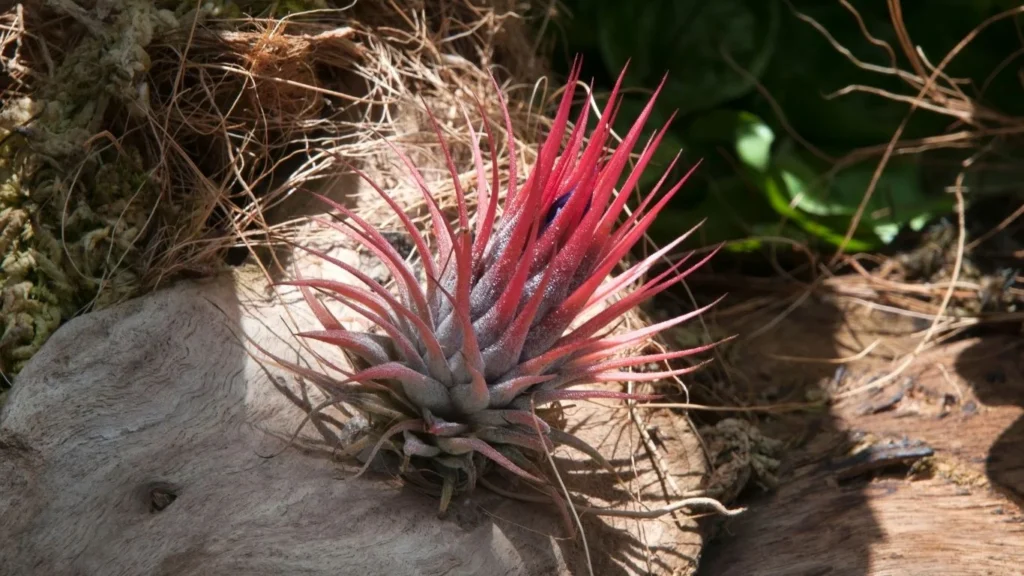
🌿 On a Natural Driftwood Piece
One of the most beautiful and organic ways to show off your air plant is by mounting it on driftwood. I found a lovely piece during a beach trip and gently tied the plant on with clear thread. It now hangs in my living room, bringing nature right into the space.
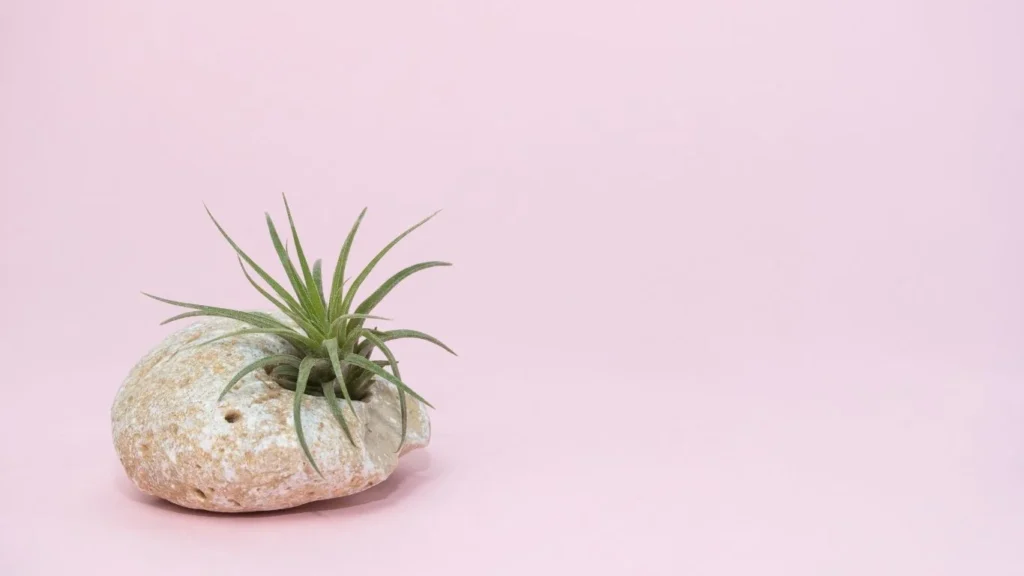
🪨 Sitting on a Crystal or Stone
For a touch of earthy elegance, try placing Tillandsia Albertiana on a chunk of amethyst, quartz, or selenite.
🖼️ In a Wall Frame or Vertical Garden
Air plants are perfect for creating living wall art. You can use a wooden or wire frame, attach a few Albertianas, and even mix them with moss or other tillandsias for a textured, layered look.

 Magnetic Planters or Shells
Magnetic Planters or Shells
Got a small space? Try magnetic air plant holders on your fridge or in a mini shell from a beach trip. These look adorable and make unique conversation starters.
Common Problems & Quick Fixes for Tillandsia Albertiana
As much as I love my Tillandsia Albertiana, like any plant, it has a few quirks. I’ve had my fair share of moments where I thought I was losing it—but then, I learned the tricks to keeping it healthy and thriving. Let’s dive into some of the most common issues you might face and the quick fixes that helped me get through them.
Leaves Turning Yellow or Brown
This can be a sign of too much moisture or insufficient air circulation. I once left mine in a humid spot for too long, and noticed the tips turning brown. Here’s what you can do:
Quick Fix:
Reduce misting and ensure your plant is getting plenty of airflow, especially after watering. Let the leaves dry fully within a few hours. If the brown spots are severe, trim them off carefully with clean scissors.
Plant Looks Droopy or Wilting
If your Tillandsia Albertiana starts looking droopy, it’s usually because it’s not getting enough water.
Quick Fix:
Soak it for 20–30 minutes in room temperature water. Afterward, let it dry thoroughly, and it should perk right up. But, be careful not to overdo it—air plants like to dry out between waterings.
No Blooming or Pups
It can be frustrating when your Tillandsia Albertiana refuses to bloom, especially when you’re taking great care of it.
Quick Fix:
Ensure it’s receiving enough bright, indirect light. Some Tillandsias need a bit of stress (like being slightly under-watered or getting a change in environment) to trigger blooming. Be patient; this plant blooms once in its life, and sometimes, it just takes time.
Rotting or Mushy Leaves
This happens when your plant gets too much moisture, or it doesn’t have enough airflow. It’s a tricky one, but don’t panic! You can save it with some TLC.
Quick Fix
Trim away any rotting parts with sterilized scissors. Then, make sure to increase the airflow and reduce watering for a while. Keep it in a well-ventilated area, and let it dry out completely.
Rotting or Mushy Leaves
This happens when your plant gets too much moisture, or it doesn’t have enough airflow. It’s a tricky one, but don’t panic! You can save it with some TLC.
Quick Fix
Trim away any rotting parts with sterilized scissors. Then, make sure to increase the airflow and reduce watering for a while. Keep it in a well-ventilated area, and let it dry out completely.
Dusty or Dirty Leaves
I don’t know about you, but when my air plants start gathering dust, I can’t help but feel like they need a little refresh.
Quick Fix: Gently rinse the leaves under lukewarm water or give them a gentle brush with a soft toothbrush. This helps keep them looking fresh and healthy, allowing them to breathe easier.
Quick Fix Recap
- Yellow or Brown Leaves: Reduce moisture, improve airflow.
- Droopy or Wilting: Soak for 20–30 minutes, dry thoroughly.
- No Blooming or Pups: Ensure bright, indirect light; be patient.
- Rotting Leaves: Trim rotted parts, increase airflow, reduce watering.
- Dusty Leaves: Rinse gently or use a soft brush.
Read about Are Air Plants Toxic to Cats?
Symbolic Meaning Recap for Tillandsia Albertiana
As we’ve explored, Tillandsia Albertiana is more than just a beautiful air plant—it’s a symbol of resilience, independence, and spiritual growth. Whether you’re drawn to its unique appearance or the deeper meanings it holds, this air plant brings profound energy to any space.
1. Resilience
This air plant thrives in tough, rocky environments, teaching us that with determination and adaptability, we can overcome life’s challenges. Just like Tillandsia Albertiana, we have the strength to survive and flourish—even in the harshest conditions.
2. Independence
Unlike most plants, Tillandsia Albertiana doesn’t rely on soil to grow. This symbolizes self-reliance and encourages us to trust in our own resources, reminding us that we can stand on our own and thrive independently.
3. Spiritual Growth
The way this plant absorbs nutrients from the air connects it to higher forces, offering a symbol of spiritual growth. Tillandsia Albertiana inspires us to seek inner development, stay open to personal evolution, and nurture our connection with nature and the universe.
4. Harmony with Nature
Its delicate beauty and simple needs remind us to slow down, embrace balance, and reconnect with the peace and tranquillity of nature. It’s an invitation to live more harmoniously with the environment and appreciate the small, wondrous moments in life.
Tillandsia Albertiana isn’t just an air plant; it’s a symbol of strength, independence, and growth. From its ability to thrive without soil to its stunning blooms, this plant teaches us valuable lessons about resilience and spiritual development.
If you’re ready to add a dash of nature’s wisdom to your home or workspace, Tillandsia Albertiana is the perfect choice. It’s not just a plant; it’s a reminder that growth, independence, and connection with nature are all achievable. So, take a moment to nurture this little beauty, and let it inspire you every day with its quiet strength and elegance.
Frequently Asked Quesstion
What is Tillandsia Albertiana and where is it from?
Tillandsia Albertiana is a unique air plant native to the highlands of Ecuador. It’s part of the Bromeliaceae family and is known for its beautiful silvery leaves and striking pink or purple flowers. Unlike most plants, it doesn’t need soil to grow.
How do I care for my Tillandsia Albertiana?
Tillandsia Albertiana is easy to care for. Place it in bright, indirect light, water it by soaking or misting, and ensure good airflow around the plant. It thrives in temperatures between 18–30°C (65–85°F) and appreciates moderate humidity levels.
How often should I water my Tillandsia Albertiana?
Water your Tillandsia Albertiana once a week by soaking it for about 20–30 minutes. In dry conditions, you can mist it a couple of times per week. Be sure to let it dry thoroughly afterward to avoid rot.
Can Tillandsia Albertiana bloom?
Yes. Tillandsia Albertiana produces vibrant pink or purple flowers when it’s ready to bloom. This usually happens once in its lifetime, and after blooming, the plant will produce pups (baby air plants).
What are pups, and how do I care for them?
Pups are the baby plants that grow at the base of the mother Tillandsia Albertiana. You can leave them attached or gently separate them once they’re about 1/3 the size of the parent. Care for the pups just like the adult plant by providing light, water, and airflow.
How can I display my Tillandsia Albertiana at home?
You can display your Tillandsia Albertiana in a variety of creative ways, such as in a hanging glass globe, mounted on driftwood, or resting on a crystal. Since it doesn’t need soil, the styling possibilities are endless.
How do I know if my Tillandsia Albertiana is healthy?
A healthy Tillandsia Albertiana should have vibrant green or silvery leaves, and it should feel firm to the touch. If it’s blooming or producing pups, that’s a sign it’s thriving. Regular watering, good light, and airflow are key to keeping it healthy.
Can I grow Tillandsia Albertiana in a terrarium?
Yes, you can. Just make sure the terrarium is open or has enough ventilation to allow airflow. This plant doesn’t like to be in a closed, humid environment for too long, as it could lead to rot.

 Magnetic Planters or Shells
Magnetic Planters or Shells
